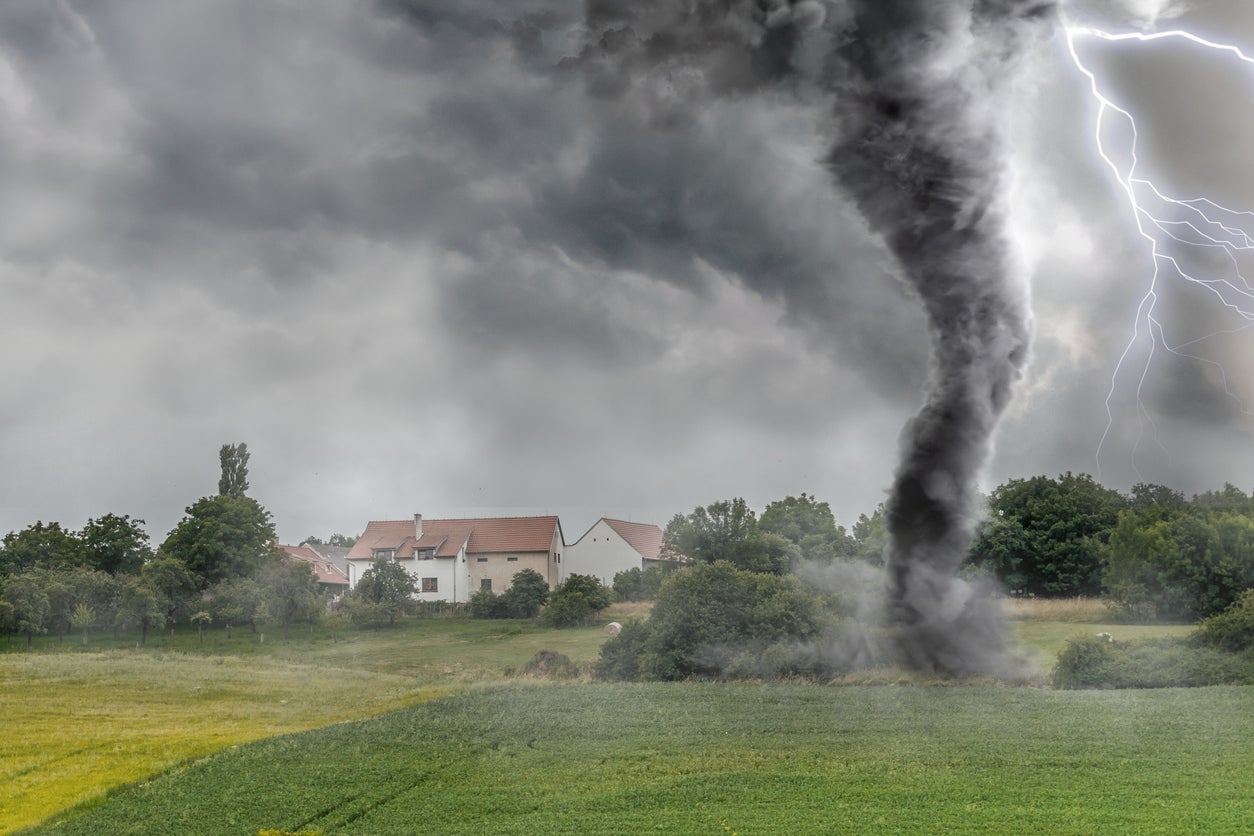Tornado Proof Gardening – How To Protect Your Garden From A Tornado


When gardening in tornado-prone regions such as the Midwest, it pays to do your homework before designing a landscape or adding trees to the yard. By choosing wind-resistant trees and taking proper care of those trees will go a long way toward garden tornado protection. Advance warning of an approaching tornado may also permit time to quickly remove items in the yard that could become airborne or cover plants that could suffer damage.
Tornado Proof Gardening
You may be wondering how to protect your garden from a tornado or if it’s even possible. When homeowners decide to plant trees or a garden, they often choose plants based on fall color, flowering, fragrance, etc. By also considering a tree’s strength against raging wind, such as during a tornado, the homeowner can minimize storm damage.
Here’s how:
- Research trees in your climate zone that are wind resistant. A good source is the local cooperative extension office. For example, trees native to storm-prone regions are good bets. They have deep root systems that keep them firmly planted in the ground. Examples of tornado hardy plants include bald cypress, ginkgo, live oak, magnolia, and winged elm.
- Avoid trees with shallow root systems and weak branch structure such as the overly planted Bradford pear. Others are birch, boxelder, cottonwood, dogwood, red cedar, and willow.
- After the new trees are planted, proper pruning, fertilizing, and watering will keep the trees healthy and more able to withstand violent weather.
- Mulch beneath the trees to the dripline to protect the roots from mower damage.
- Periodically check your landscape for dead trees and broken or damaged limbs. Consult an arborist, if necessary, for trimming or removal.
Garden Tornado Protection When Storms Imminent
With today’s sophisticated weather systems, meteorologists can warn residents of impending high winds and dangerous storms. Before bad weather strikes, here are some tips to minimize storm damage:
- Check the yard for anything that can become airborne and, if possible, bring it inside the garage or home. Examples include potted plants or hanging baskets, yard ornaments, lawn furniture, bird feeders, and hoses. Large containers can be moved to a sheltered area.
- Use stakes to help support small trees and shrubs.
- Examine your produce garden and harvest as much as possible.
- Help protect small gardens by surrounding them with sandbags or bags of soil conditioners you have on hand.
- Remove lightweight row covers that could be damaged in high winds.
A catastrophic weather event such as a tornado can be devastating, but a few precautions where your garden is concerned may reduce the amount of cleanup afterwards.
Sign up for the Gardening Know How newsletter today and receive a free copy of our e-book "How to Grow Delicious Tomatoes".

After graduating from Oklahoma State University with a degree in English, Susan pursued a career in communications. In addition, she wrote garden articles for magazines and authored a newspaper gardening column for many years. She contributed South-Central regional gardening columns for four years to Lowes.com. While living in Oklahoma, she served as a master gardener for 17 years.